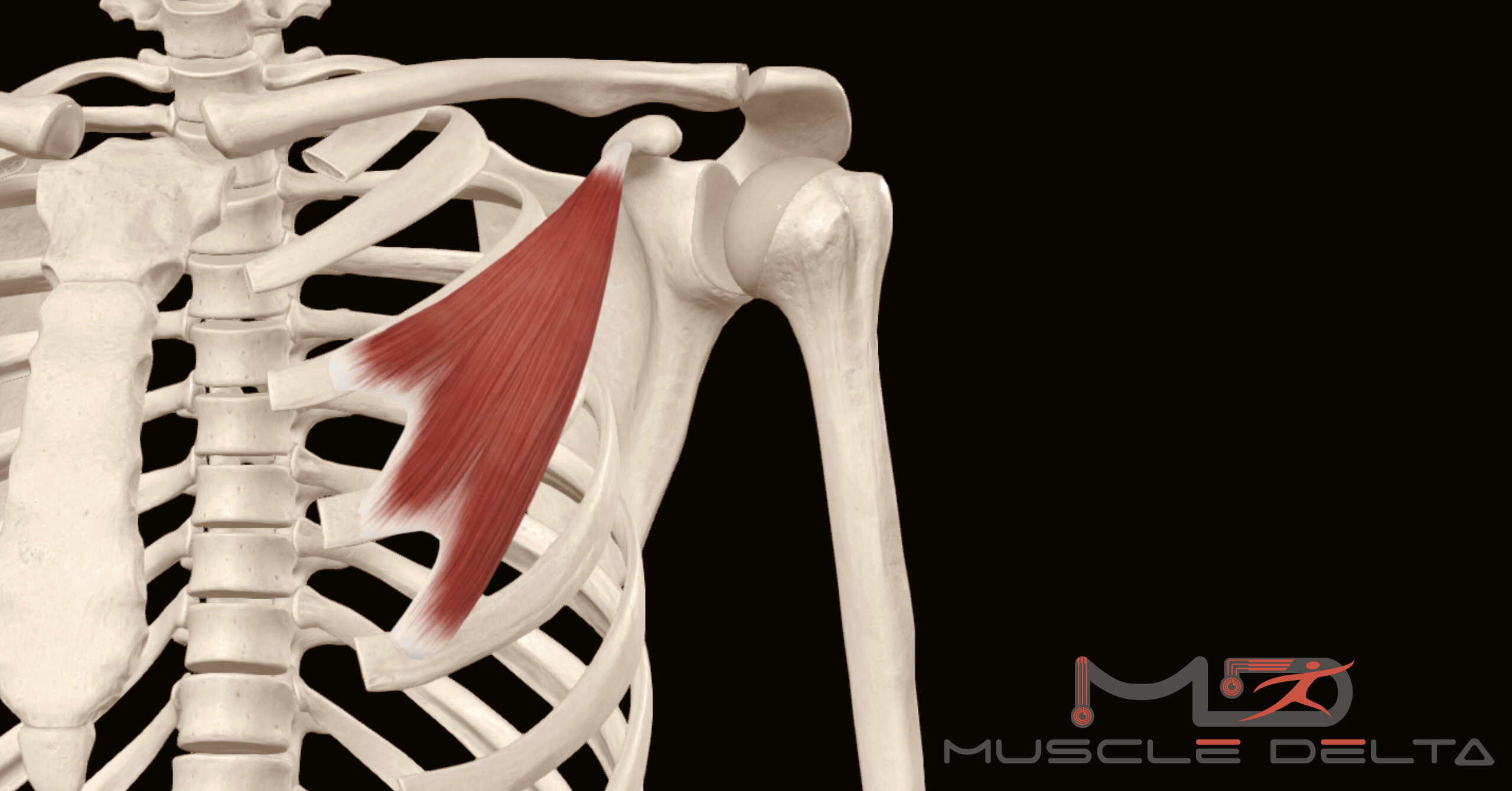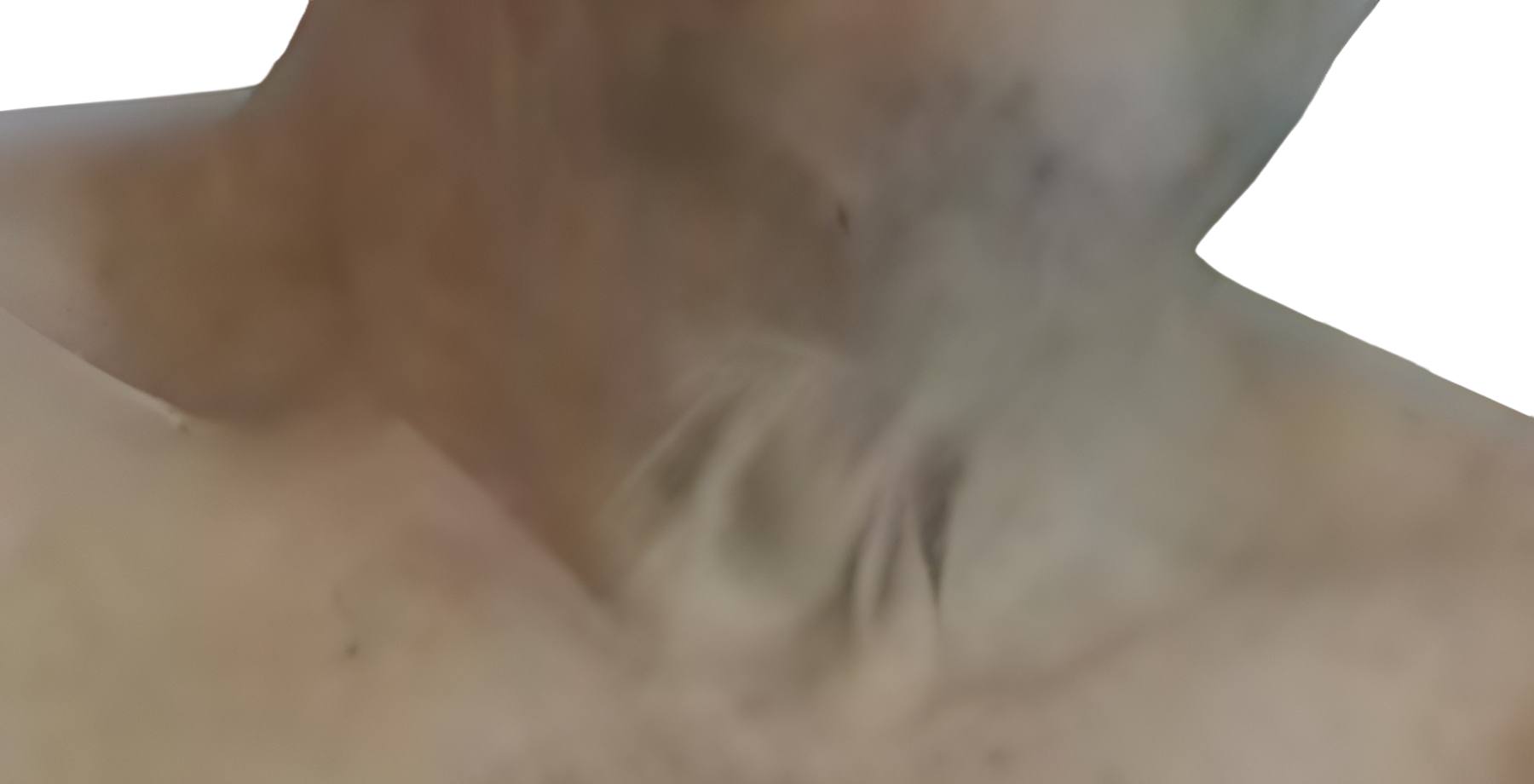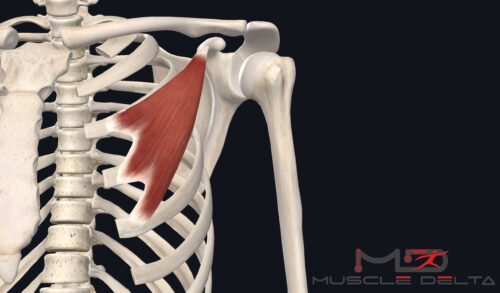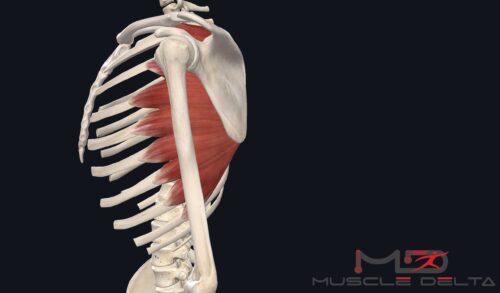- Effectively deal with software tissue
- Identify correct muscles to lengthen
- Pre and Post Surgery Prep
- Simply treating popliteus will provide more room during surgery, but of course a proper analysis using our tools to identify and treat will yield even better results pre and post surgery
- Scar remediation post surgery. Light pressure with the Muscle Delta Assistant safely and effectively removes scar tissue, leaving healthy and flat tissue
- Lengthen key muscles to return normal alignments
- Treat psoas to properly align hips and back
- Treat the diaphragm, which is the most important muscle of respiration, and separates the thoracic cavity, containing the heart and lungs, from the abdominal cavity: as the diaphragm contracts, the volume of the thoracic cavity increases
- Greatly increase chest cavity area
- If the rib cage and pelvis are out of alignment (e.g., if the lower back arches during inhalation or the rib cage elevates), the ZOA may be compromised. This can lead to shallow breathing, reliance on accessory breathing muscles, and potentially other musculoskeletal issues
- Improve space for stomach and organs
- Strengthen pelvic floor
- Sleep apnea and oxygenation
- Safely and Effectively treat the Psoas
- Return patient’s hips to their proper alignment, the psoas has them pulled forward and down, GREATLY disrupting the pelvic floor. Once psoas is treated and hips return to proper alignment, the treatment to the pelvic floor will be far more effective.
- Women’s and men’s musculoskeletal pelvic health conditions
- Pelvic pain of musculoskeletal origin
- Chronic pelvic pain
- Erectile dysfunction post surgery
- Bowel incontinence/dysfunction
- Pelvic organ prolapse
- Post surgery
- Post cancer treatment
- Pregnancy related pelvic girdle pain and back pain
- Postpartum recovery
- Menopause transitions
- Postnatal diastasis rectus abdominus
- Erectile dysfunction
- Diagnose and Treat these muscle groups
- Facial Group
- Orbital Group
- Nasal Group
- Oral Group
- Chewing group
- Neck Suprahyoid Muscles
- Neck Infrahyoid Muscles
- Complete Spinal Anatomy
- Detailed Shoulder Anatomy
- Muscle database at therapist’s fingertips
- Migraine Treatment
- Sleep Apnea
- TMJ and Jaw
- So many more
- Carpal tunnel syndrome
- Utilize Muscle Delta Patient Treatment Plan Protocols
- Improve outcomes
- Appropriately increase patient treatment plans, pre and post surgery
- Lengthen muscles and create more room in and around joints prior to surgery
- Elegantly assist in post surgery healing of all tissue
- Increase blood flow
- Soft pressure scar remediation
- Break up all healing Muscle lengthening
- Return all tissue/muscles to better than pre surgery condition
- Muscles database at you and therapist’s fingertips
- Understand patients “goals”, and prepare treatment plan that effectively addresses the goals
- Participate in hobbies and family activities
- Reduce pain
- Increase feelings of comfort and wellness
- Fall Prevention
- Stay out of a walker
- Changing a lightbulb
- Washing windows
- Putting away dishes/cups
- Hanging clothes
- Dusting the top of the dresser
- Getting in and out of a car
- Getting into or out of the shower
- Stair climbing
- Stepping onto a step stool to reach a high surface
- Anything to do with improving movement


- Neck
- Non-Surgical Facelift Helper
- Body Alignment
- Migraine and Headache
- All Over Body Pain Reduction
- Treat Tissue Anywhere on the Body
- Finally, a safe & effective way to properly treat Soft Tissue!!!
- You CANNOT Traction out of MUSCLE LENGTHENING!
- Get people OFF unnecessary MEDICATIONS!
- A therapy that DELIVER RESULTS AND RETAIN PATIENTS
- Get staff certified in one evening
- SIMPLE to operate
- Treat more than one patient at a time!
- CPT Treatment plans that will maximize patient value
- Adjustments are so much more effective once soft tissue is healthy!
NFL Quarterback
Introduction
Precision Musculoskeletal Therapy is an “Engineering Based” methodology that uses technology assisted therapy, paired with highly skilled therapists who analyze and apply precision treatment to the appropriate tissues and muscle. 100% non-invasive, medication-free, non-surgical techniques are applied to a patients muscles to treat very deeply into the muscles, that result in truly profound physiological changes to muscles. Muscle Delta’s technology safely treats any muscle and tissue anywhere on the body, from head to toe. This technology also is possibly the only known safe way to precisely treat muscles such as the psoas, which is located on the front of the spine and under the stomach. The treatment specifically penetrates absolutely safely, but deeply, to the correct depth for a specific area, into each muscle and tissue being treated.
The therapist uses these specific techniques to help restore physiological balance of the musculoskeletal alignments, which also affect joint dysfunction, nervous system, and vein and arterial systems. Homeostasis is restored to the patient through restoring optimal functioning of these areas. When restriction or dysfunction in these areas has been corrected or relieved, a patient may also experience an improvement of their physical, mental, emotional and spiritual well –being.
This case study seeks to describe and explain what occurred with a patient who had a “simple” orthopedic injury that did not recover after following the prescribed physical therapy technique, and what the results were when treated with Muscle Delta Musculoskeletal Precision Therapy Technology. This therapy does require a skilled therapist who is trained on not only proper palpation of the muscular systems, but also in the Muscle Delta “Engineering” based methodology and analysis techniques.
History
Adult Male, age 27: NFL Quarterback Athlete was presented for therapy utilizing Muscle Delta Musculoskeletal Therapy Technology and Methodology. The patient was diagnosed with sports related injury, to the right shoulder complex, resulting in ongoing pain that affected performance and mobility. Injury had been worsening over several years. However, utilizing Muscle Delta Engineer Based Analysis, it was determined that 15 of years intense training and throwing a football with the right arm resulted in overuse repetitive stress injury resulting in two shortened muscles. The repetitive stress injury contributed much more as a causation then the sports injury.
The patient was in the National Football League, was one of 32 Elite Athletes who had access to some of the finest Therapists and Doctors. However, the injury did not improve from therapy modalities applied, and as importantly, the injury was misdiagnosed. The modalities applied prior to Muscle Delta Therapy were ineffective, and were as follows:
- Manual Massage Therapy
- Functional Range of Motion Therapy
- Advance Stretching Techniques
Tests and Measurements
When patient was presented to Muscle Delta Therapist, pain and mobility dysfunction were as follows:
Numeric Rating Scale: patients rate their pain on a scale from 0 to 10, with 0 being no pain and 10 being the worst possible pain.
- Patient described pain at rest: 2
- Patient described pain at normal activity: 3
- Patient described pain at intended activity: 4
- While the intended activity pain was not extraordinarily high, the mobility impairment was increasing.
Muscle Delta normally conducts a Range of Motion test for each affected joint using our state of the art ROM tool that measures common Ranges of Motion on key joints in the body. The relevant ranges of motion were measured, with nothing “remarkable” to note: The results were reported as followed:
- Shoulder Flexion, Right 180 Degrees
- Shoulder Flexion, Left 180 Degrees
- Shoulder Abduction, Right 175 Degrees
- Shoulder Abduction, Left 179 Degrees
The only minor range of motion deviation observed from “normal” was on the right side abduction. However, what was observed was a noticeably shortened right arm during full shoulder extension, and was approximately 2” shorter length than left arm at full shoulder extension. This shortened arm was known and observed by the patient and prior treating Therapists and Doctors.
Palpation and Engineering based Musculoskeletal analysis were then performed, and the following treatment was prescribed and applied.
Treatment
Based on Range of Motion testing and the subsequent visual alignment observations, and Palpation and Engineering based Musculoskeletal analysis following was determined and treatment prescribe:
Right Shoulder pain and reduced mobility during strenuous sports activity: analysis revealed that shoulder pain was the “symptom”, and repetitive stress shorting of the right pectoralis major, and right serratus anterior muscles were the actual “sources” of the injury/pain.
Fifteen minutes of medium/light pressure was precisionally applied to the serratus anterior. Medium/light pressure was selected based on palpation, treatment head test pushes, and with verbal patient feedback. Serratus Anterior is a small thin muscle, superficial to rib bones, and it does not require high pressure, and higher pressure would typically be uncomfortable. Once the correct pressure is established, treatment begins.
After the initial release and lengthening of the superficial serratus anterior muscle, therapy then moved to the true source, which was the shortened pectoralis major that was greatly pulling the shoulder and humerus downward. The correct larger treatment attachment was applied to the main treatment head of the “Muscle Delta Assistant” Musculoskeletal Precision Technology Tool, the correct pressure was selected, and treatment continued for additional 20 minutes.
One final muscle that was noted during analysis was the right supraspinatus, was treated for 10 minutes near the acromion process. That muscle is difficult to treat effectively with traditional tools and tends to get very tight when shoulder issues occur. A pointed treatment head attachment was applied and medium/light pressure was utilized.
Results
Utilizing the Muscle Delta Musculoskeletal Therapy Analysis Methodology, and Treatment Tools, the Patient’s results were immediate and profound. Post treatment, the Range of Motion was tested again, and the arms were now of equal length, and the patient was astounded. Immediately after treatment, further athletic sports related motion was tested by throwing a football. Some power was restored and pain was significantly reduced. This was mostly a misdiagnosed repetitive stress injury resulted in shortened muscles.
There was only one treatment session, as this Athlete was not local to the treatment. Muscle Delta determined that some additional improvement would have been experienced with several more treatments, but the relatively critical state of the injury had been greatly reversed.
Discussion
Utilizing the Muscle Delta Musculoskeletal Therapy Analysis Methodology, and Treatment Tools, patients quickly and safely are returned to a healthy and pain free state. It is important to restate more clearly that this therapy and technology is completely 100% non-invasive, non-surgical, medication-free, and expeditious. The efficacy, and safety of Muscle Delta Musculoskeletal Therapy cannot be overstated, especially when compared to other “deep penetrating” methodologies, and tools currently utilized in Physical and Orthopedic Therapy. When compared to Laser, Shock, and Electrical therapies, in order to treat as deeply as Muscle Delta Musculoskeletal Therapy Tools the power output of these other modalities must be set to very a powerful setting. This high level of “energy” applied is indiscriminate, and is more than likely affecting other systems in a potentially very negative way. They are essentially using “brute” force to penetrate into the body, they are not applied in a totally precise manner, and they definitely do not physiologically change the tissue like non-invasive pressure does.
Muscle Delta Musculoskeletal Technology Advanced Training discusses human skeletal muscle hierarchical structure in detail, and how deep and precision therapy positively affects all the related systems within a muscle. There are also many other positive changes within the muscles cellular structure, and they are all examined in the advanced training.
Muscle Delta: Safety, Standards, and Effectiveness Overview
Compliance with Safety and Robotics Standards
Muscle Delta strictly adheres to all pertinent safety and robotics standards, ensuring its technology remains safe and reliable for users.
Collaborative Robotics Design and Safety
Collaborative robots (cobots) are fundamentally different from traditional industrial robots. By design, they cannot harm a human under any circumstances.
These cobots are limited to a maximum speed of 25mm per second to ensure safety during operation.
Key Collaborative Robot Safety Standards
ISO/TS 15066:2016 (International) and RIA TR R15.606-2016 (U.S.) provide the foundational safety requirements for collaborative robot systems. Importantly, it’s the system as a whole—not just the robot alone—that is evaluated for collaborative status.
Collaborative robot systems are a subset of industrial robot systems, not an alternative to them.
These guidelines build upon foundational industrial robot safety standards to maintain consistency and safety across all implementations.
Certified Medical and Electrical Standards
Muscle Delta technology is compliant with a comprehensive range of recognized medical and electrical equipment standards, including:
- ANSI/AAMI ISO 10993-1, 10993-5, 10993-10: Biological evaluation and toxicity testing of medical devices.
- IEC 60601-1, 60601-1-2, 60601-1-6, 60601-1-8: General requirements for basic safety, electromagnetic disturbance, usability, and alarm systems in medical electrical equipment.
- IEC 62366-1: Usability engineering for medical devices.
- IEC 62304: Medical device software life cycle processes.
- IEC/TR 60601-4-1, IEC TR 60601-4-2: Guidance for medical devices employing autonomy and electromagnetic immunity.
- IEC 80601-2-78: Particular requirements for safety and performance of medical robots used for rehabilitation and assessment.
- ISO 14971: Risk management for medical devices.
- ISO 15223-1: Symbols and labeling for medical devices.
Manufacturing and Certifications
Muscle Delta devices are 510(k) exempt and non-invasive.
All devices are manufactured by AHI Automation in Henderson, NV—a certified UL-listed assembler whose clients include Disney, Epcot, Royal Caribbean, The Sphere (Las Vegas), and DaVinci Surgery Robotics.
Each Muscle Delta device visibly displays the UL listing sticker, verifying electrical safety.
Clinical Use and Adoption
Muscle Delta technology has been used in hospitals such as Advent Health (formerly Florida Hospital) for pre- and post-surgery foot and ankle treatment.
The technology is trusted by sports organizations, including a purchase by the New York Jets.
Over 1,000 elite athletes (including household names) have been successfully treated using this system.
Ongoing evaluations are underway at several medical institutions, with double-blind studies planned within the next six months.
Methodology and Efficacy
Muscle Delta’s approach is rooted in a “muscle lengthening” methodology, which is recognized as the safest within its product class.
It is the method itself, not just the device, that delivers proven, repeatable improvements by aligning the body through proper muscle lengthening—a universal need as muscles naturally shorten over time.
This technique closely mimics manual therapy but does so with enhanced safety, precision, and repeatability.
Endorsements and Public Perception
Renowned athletes like Tom Brady, a major advocate for muscle pliability, publicly support muscle lengthening concepts. He has stated, “over time muscles shorten, and we need to lengthen muscles.”
Case studies posted by Muscle Delta support their claims, presenting data consistent with known standards and expert endorsements.
Legal and Regulatory Notes
All claims and product information are backed by proper certifications, with verification available on the devices.
Disclaimer: A disclosure page is linked in the footer of Muscle Delta’s website, outlining safety and regulatory information.
Summary:
Muscle Delta leverages industry-leading safety standards, proven methodologies, and robust certifications to provide what appears to be the safest and most effective non-invasive solution for muscle lengthening and adhesion removal available today. Its technology is built on methods recognized as best-in-class, distinguished by official certification, extensive medical use, and endorsements by elite athletes.














